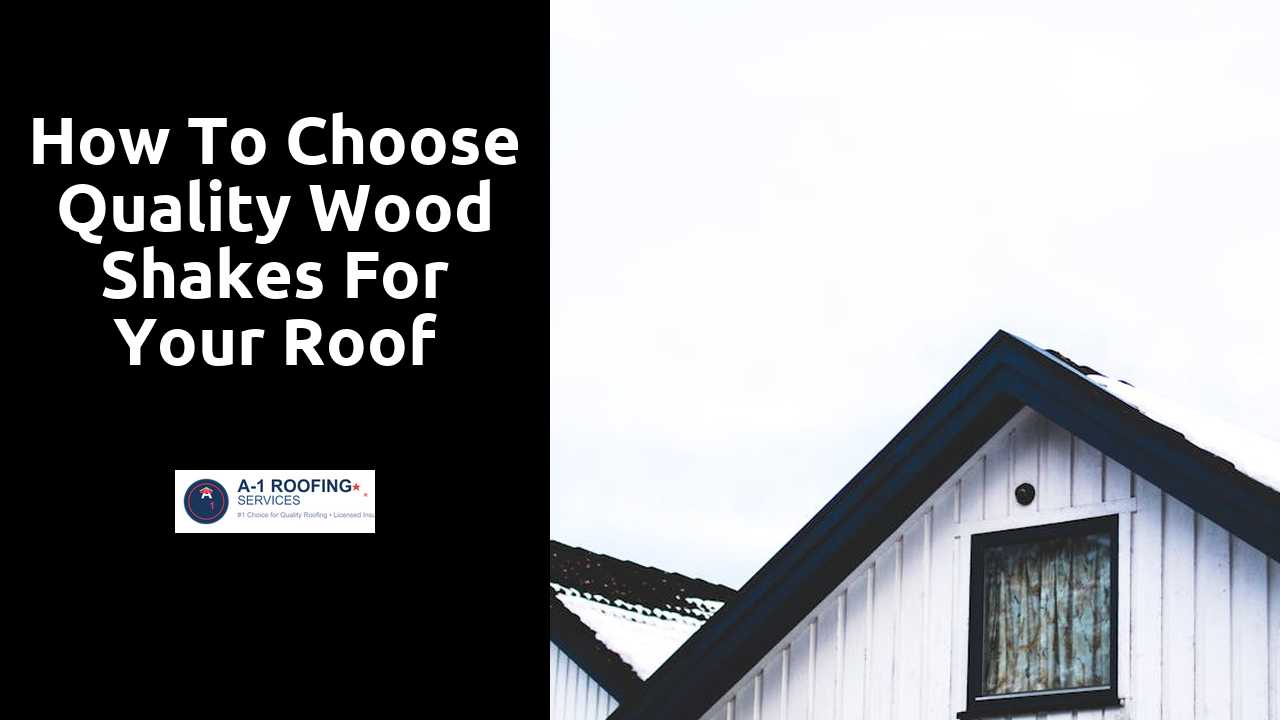
How to Choose Quality Wood Shakes for Your Roof
Table Of Contents
Cost Analysis
When budgeting for wood shakes, it's essential to consider the initial costs as well as long-term expenses. Quality shakes, made from durable materials like cedar or redwood, tend to have a higher upfront price tag but offer better longevity and performance. Expect to pay between $7 and $15 per square foot, depending on the type and grade of wood. These options might require a larger investment, but this might offset future maintenance and replacement costs.
In addition to the material cost, installation price plays a significant role in the overall budget. Professional installation ensures that the shakes are placed correctly, which can enhance their lifespan and performance. However, some homeowners may consider a DIY approach to save money. Carefully weighing the potential savings against the risks of improper installation is crucial. Mistakes can lead to water damage and additional expenses, making it important to evaluate all aspects of the financial commitment.
Continue to read this blog post for more great tips.
Budgeting for Quality Wood Shakes
When selecting wood shakes for your roofing project, it’s crucial to consider not just the initial purchase price but also the long-term investment they represent. High-quality wood shakes made from durable materials can cost more upfront, yet they often provide better longevity and performance. Factors influencing the price include the type of wood, grain quality, and thickness. Investing in premium products may save homeowners from frequent repairs and replacements down the line.
Budgeting should also account for additional expenses such as installation and maintenance. Professional installation is often recommended to ensure proper fitting and longevity of the shakes. While DIY options may reduce immediate costs, they can lead to errors and compromise the roof’s integrity. Regular maintenance is necessary for wood shakes, which adds to the overall cost. Collectively evaluating these aspects will aid in making an informed decision regarding your budget.
Installation Factors
Selecting the right installation method is crucial when it comes to wood shakes. Homeowners can opt for professional installers who possess the necessary experience and tools to ensure a proper fit and finish. Professional installation often includes warranties, which can provide peace of mind about the work done and the longevity of the roof. However, factors such as local labor costs and availability can influence this decision significantly.
An alternative option is to install the wood shakes as a DIY project. This choice can lead to substantial savings, but it requires a thorough understanding of the installation process. Proper techniques for cutting, aligning, and securing each shake are essential to avoid future issues such as leaks or damage. Homeowners should also consider their skill level and the time commitment required before deciding on a DIY approach.
Professional vs. DIY Installation
Selecting the right installation approach can significantly impact the overall quality and longevity of your wood shake roof. Hiring a professional ensures that the installation adheres to industry standards and local building codes, which is crucial for maintaining warranties and for optimal performance. Experienced roofers possess the skills and tools necessary to handle the complexities of the job, including proper alignment and sealing techniques that can prevent leaks and other issues down the line.
On the other hand, opting for a DIY installation may seem appealing from a cost-saving perspective. Many homeowners feel a sense of pride in undertaking such a significant project. However, without adequate knowledge and experience, mistakes can occur. Common challenges include miscalculating the number of shakes needed or failing to account for ventilation and moisture control. Careful consideration of both options will help you determine the best route for your specific situation.
Maintenance Requirements
Regular maintenance is essential to prolonging the life of wood shake roofs. Homeowners should inspect their roofs at least twice a year for signs of wear, such as loose or broken shakes. Cleaning debris, such as leaves and branches, helps prevent moisture buildup, which can lead to rot and mold. If algae or moss begins to grow, it’s important to remove it promptly using a gentle cleaning solution designed for wood. These proactive steps can help maintain the roof’s integrity and appearance.
In addition to inspections, treating the wood shakes with a protective sealant can enhance durability. This treatment repels water and reduces the likelihood of decay from trapped moisture. Any damaged shakes should be replaced as soon as they are identified to avoid more extensive repairs down the line. Regular maintenance not only preserves the aesthetic appeal of the wood shake roof but also contributes to its overall performance and longevity.
Caring for Your Wood Shake Roof
Regular maintenance is essential for preserving the longevity and aesthetics of wood shake roofs. Begin with routine inspections, preferably every six months, to identify issues such as curling, splitting, or algae growth. Leaky areas or any signs of insect infestations should also be addressed promptly. Clearing debris, such as leaves and branches, can help prevent moisture buildup, which often leads to mold and rot. Ensuring proper ventilation is equally important, as it reduces heat and moisture accumulation in the attic space, benefiting the roofing material.
Cleaning should be done with care using a soft wash or low-pressure method to avoid damaging the shakes. Treatments like wood preservatives can enhance resistance to decay and pests. It's advisable to avoid using harsh chemicals, as they can alter the wood’s natural appearance. Reapplication of protective coatings can extend the life of the shakes and enhance their color. Keeping the roof clear and in good repair not only improves its durability but also enhances the overall appeal of the home.
Related Links
Maintenance Strategies for Wood Shake RoofingUnderstanding the Benefits of Wood Shake Roofing